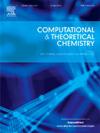Theoretical evaluation of 17β-estradiol and 17α-ethinyl estradiol adsorption on reduced graphene oxide: Interactions, bonds, and energies
IF 3
3区 化学
Q3 CHEMISTRY, PHYSICAL
引用次数: 0
Abstract
The 17β-estradiol (E2) and 17α-ethinyl estradiol (EE2) are the main causes of estrogenic activities in aquatic bodies and sewage, mainly affecting the male and female reproductive systems, causing various disorders such as menstrual irregularities, infertility, endometriosis, polycystic ovary syndrome, spontaneous abortions and other illnesses. One technique for removing hormones from water bodies is using adsorption and the use of reduced graphene oxide (rGO) is interesting because rGO has excellent adsorption properties. In this context, the work aims to theoretically evaluate the interaction between 17β-estradiol (E2) and 17α-ethinyl estradiol (EE2) with reduced graphene oxide (rGO) matrix. The frontier molecular orbitals and the molecular electrostatic potential showed that the interactions between the adsorbate-adsorbent can occur through hydrogen bonds, −H … π and π … π interactions. The binding energy values showed that the interaction can occur, the enthalpies that the process is exothermic and the Gibbs energy that only the adsorption of E2 hormones with the rGO matrix is spontaneous. The classical hydrogen bonds vary between 1.924 Å and 2.781 Å. The topological parameters showed that almost all interactions are electrostatic, and non-covalent interaction analysis indicated the presence of Van der Waals interactions predominantly. In this way, it can be confirmed that the study showed the efficient use of the rGO matrix for the treatment of effluents that contain the hormones E2 and EE2.

求助全文
约1分钟内获得全文
求助全文
来源期刊

Computational and Theoretical Chemistry
CHEMISTRY, PHYSICAL-
CiteScore
4.20
自引率
10.70%
发文量
331
审稿时长
31 days
期刊介绍:
Computational and Theoretical Chemistry publishes high quality, original reports of significance in computational and theoretical chemistry including those that deal with problems of structure, properties, energetics, weak interactions, reaction mechanisms, catalysis, and reaction rates involving atoms, molecules, clusters, surfaces, and bulk matter.
 求助内容:
求助内容: 应助结果提醒方式:
应助结果提醒方式:


